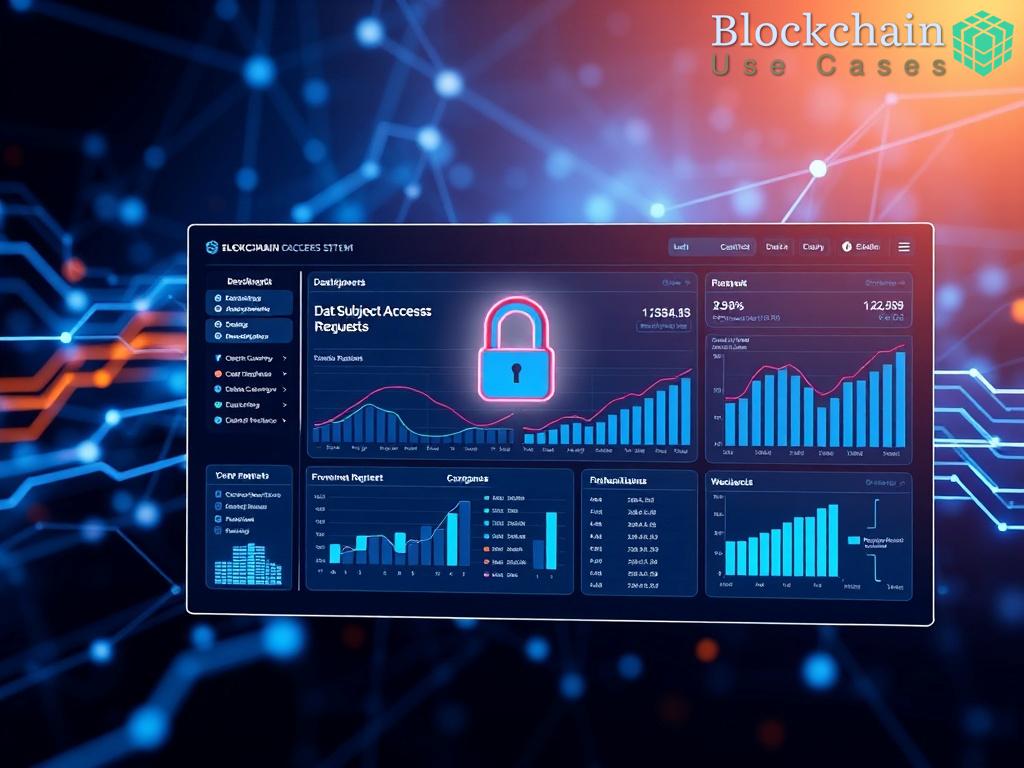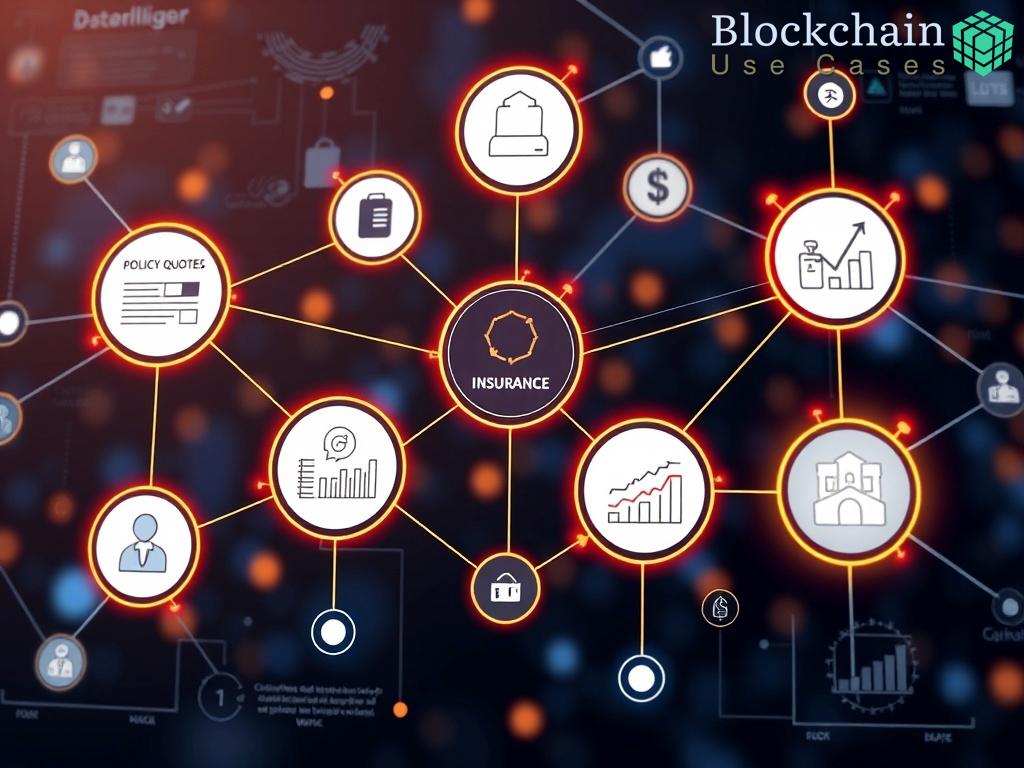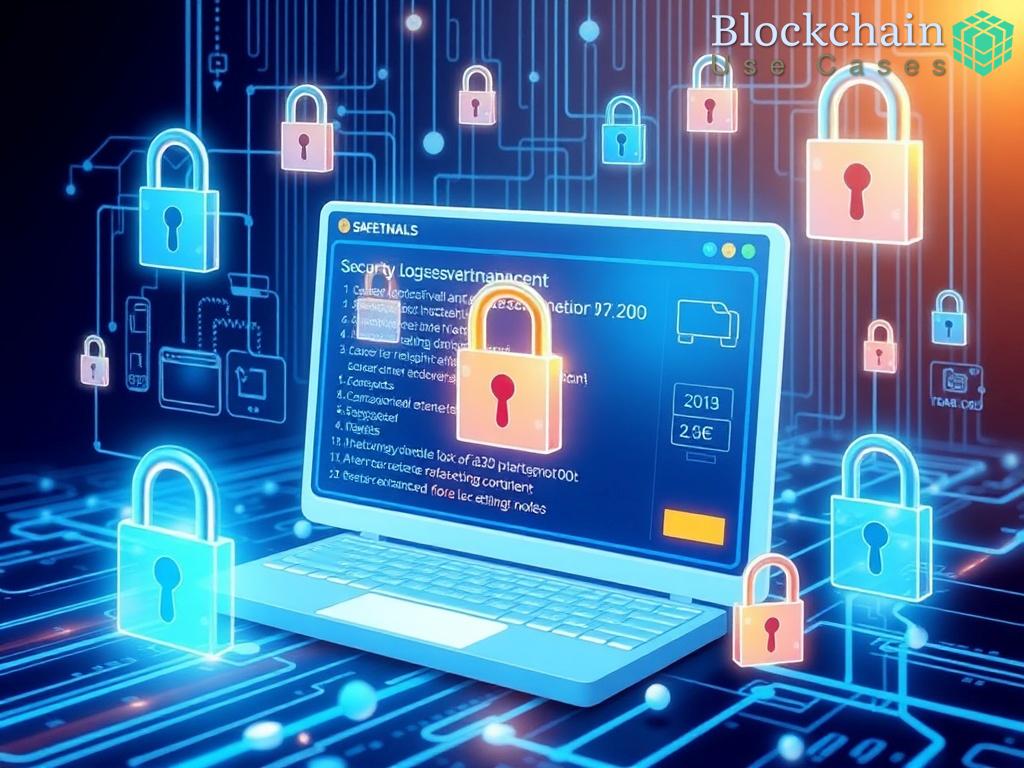Understanding Smart Contracts in Cybersecurity

In an era where cyber threats are evolving at an unprecedented pace, traditional methods of risk assessment and threat modeling are becoming inadequate. Enter smart contracts: self-executing contracts with the terms of the agreement directly written into code. These digital agreements not only streamline processes but also offer a formidable layer of security against potential threats in the cyber landscape. By automating various functions, smart contracts can significantly reduce human errors and enhance the overall security posture of organizations.
Integrating smart contracts into existing risk assessment frameworks can transform how organizations evaluate and mitigate risks. By automating tasks such as compliance checks and incident response, smart contracts enable faster decision-making and a more agile response to threats. Moreover, they can facilitate transparent transactions and interactions, ensuring that all parties adhere to predefined security protocols.
Here are key benefits of incorporating smart contracts into cybersecurity:
- Automation: Reduces the need for manual intervention, lowering the chances of human error.
- Transparency: Provides a clear, immutable record of all transactions, enhancing accountability.
- Speed: Accelerates processes such as incident response, allowing quicker remediation of security issues.
- Cost-Effectiveness: Decreases operational costs by minimizing the need for intermediaries and streamlining workflows.
Despite their potential, deploying smart contracts in cybersecurity is not without its challenges. Organizations must consider factors such as coding errors, security vulnerabilities inherent in the underlying blockchain technology, and the need for robust legal frameworks to govern these digital contracts. Additionally, the complexity of integrating smart contracts with existing systems can pose significant hurdles.
To overcome these challenges, it is essential to adopt a phased approach to implementation, focusing on rigorous testing and continuous monitoring. The following table summarizes critical considerations for organizations looking to implement smart contracts in their cybersecurity strategies:
| Consideration | Description |
|---|---|
| Code Quality | Ensuring that smart contracts are thoroughly tested and audited to eliminate vulnerabilities. |
| Regulatory Compliance | Understanding the legal implications and ensuring that smart contracts adhere to relevant regulations. |
| Integration Complexity | Evaluating how smart contracts will integrate with existing cybersecurity frameworks and tools. |
| Monitoring and Management | Establishing processes for ongoing monitoring and management of smart contracts post-deployment. |
Automated Risk Assessment Techniques Using Smart Contracts
As organizations strive to enhance their cybersecurity frameworks, the integration of smart contracts presents an innovative approach to automated risk assessment. These self-executing agreements not only streamline operations but also provide a robust mechanism for assessing risks in real-time. By leveraging the inherent properties of blockchain technology, smart contracts facilitate a more dynamic and responsive risk assessment process, enabling organizations to adapt to evolving threats.
The advent of smart contracts allows organizations to establish dynamic risk assessment models that automatically adjust based on predefined criteria. Unlike traditional models that rely heavily on historical data and manual input, these automated systems utilize real-time data to evaluate risk factors continually. For instance, when a new vulnerability is identified, the smart contract can trigger an immediate reassessment of the organization’s risk profile, ensuring that defenses are always aligned with current threat landscapes.
This adaptability is crucial in today’s fast-paced cyber environment, where static assessments can quickly become outdated. By automating the risk assessment process, organizations can ensure a proactive stance against cyber threats, minimizing their exposure to potential breaches. Furthermore, the transparency of smart contracts promotes accountability as all actions taken by the contract are recorded on an immutable ledger.
Automated risk assessment techniques using smart contracts also significantly enhance compliance management and incident response strategies. By embedding compliance requirements directly into the contract logic, organizations can automate the verification of adherence to security policies and regulatory standards. This not only reduces the administrative burden associated with compliance checks but also accelerates the identification of non-compliance issues.
In the event of a security incident, smart contracts can initiate predefined responses automatically. For example, if a data breach is detected, the contract can automatically notify stakeholders, enact predetermined containment measures, and even initiate compensation processes if necessary. Such automation significantly reduces response times, allowing organizations to mitigate damages swiftly.
The table below summarizes the advantages of using smart contracts in automated risk assessment:
| Benefit | Description |
|---|---|
| Real-time Assessment | Provides continuous updates to risk profiles based on current data and threats. |
| Improved Compliance | Automates compliance checks, ensuring adherence to regulations and policies. |
| Faster Incident Response | Enables rapid action during security incidents, effectively minimizing potential damages. |
| Increased Accountability | Ensures all actions are recorded on a transparent ledger, enhancing trust among stakeholders. |
Integrating Smart Contracts into Threat Modeling Frameworks
The implementation of smart contracts in cybersecurity extends far beyond mere automation; it represents a paradigm shift in how organizations can approach threat modeling. By embedding complex algorithms directly into these self-executing contracts, organizations are presented with a novel opportunity to redefine their threat modeling frameworks. This integration not only enhances precision but also fosters a proactive security posture that can adapt to shifting threat landscapes.
Enhanced Threat Detection through Automation is one of the most compelling advantages of incorporating smart contracts into threat modeling. Traditional threat modeling often relies on static assessments that can quickly become obsolete in the face of new vulnerabilities. By utilizing smart contracts, organizations can automate the threat detection process. For instance, a smart contract can be programmed to continuously scan for emerging threats and vulnerabilities within the system. This real-time analysis ensures that threat models remain current and reflective of the actual risk landscape, thereby fortifying defenses against potential attacks.
Interoperability and Data Sharing are crucial in the context of threat modeling. Smart contracts can facilitate seamless communication between different systems and stakeholders, enabling the sharing of threat intelligence in a secure and efficient manner. When integrated into a threat modeling framework, smart contracts can provide a decentralized approach to data sharing, where stakeholders can access and contribute to a collective understanding of threats without compromising sensitive information. This collaborative approach enhances the overall effectiveness of threat models, as organizations can benefit from a wider pool of data and insights.
Moreover, the incorporation of smart contracts can significantly improve decision-making processes within threat modeling frameworks. The automated nature of smart contracts allows for rapid response to identified threats and vulnerabilities. When a potential risk is detected, the smart contract can trigger a series of predefined actions, such as updating threat models, notifying relevant stakeholders, and even implementing immediate countermeasures. This swift action minimizes the window of opportunity for attackers, effectively bolstering the organization’s defense mechanisms.
In summary, the integration of smart contracts into threat modeling frameworks not only enhances the accuracy and responsiveness of threat assessments but also promotes a culture of collaboration and real-time decision-making. By leveraging the power of smart contracts, organizations can transform their approach to cybersecurity, ensuring that they remain one step ahead of ever-evolving cyber threats.
Benefits and Challenges of Smart Contracts in Risk Management
As organizations navigate the complexities of cybersecurity, the integration of smart contracts into risk management practices emerges as a transformative solution. These self-executing agreements, embedded with code that automatically enforces terms, facilitate not only streamlined processes but also a profound enhancement in security frameworks. The ability of smart contracts to operate autonomously leads to significant efficiencies in identifying, assessing, and managing risks.
One of the most compelling benefits of employing smart contracts in risk management is the potential for real-time monitoring. By leveraging blockchain’s immutable nature, organizations can ensure that all transactions and changes in risk posture are recorded in a transparent manner. This capability fosters greater accountability and trust among stakeholders, as every action is documented and verifiable. Moreover, automated compliance checks can be integrated directly into these contracts, ensuring that organizations remain aligned with regulatory requirements without the need for extensive manual oversight.
While the benefits are considerable, organizations must also grapple with the challenges posed by smart contract implementation. One major concern relates to code quality and security vulnerabilities. If the underlying code contains flaws or is not rigorously tested, it can expose organizations to new types of risks rather than mitigate existing ones. Therefore, ensuring the robustness of smart contracts through thorough auditing becomes paramount.
Another challenge lies in the integration complexities that organizations face when merging smart contracts with existing risk management frameworks. The need for interoperability with legacy systems can create friction and delay the overall adoption process. Additionally, the evolving regulatory landscape surrounding smart contracts can pose compliance challenges, as organizations must navigate uncharted waters to align digital agreements with traditional legal frameworks.
| Benefit | Description |
|---|---|
| Real-time Monitoring | Facilitates continuous oversight of risk profiles and compliance status, enhancing responsiveness to changes. |
| Enhanced Accountability | Creates a transparent record of all actions taken, fostering trust and cooperation among stakeholders. |
| Automated Compliance | Reduces administrative burdens by automating adherence checks to regulatory and organizational policies. |
In conclusion, while the integration of smart contracts into risk management offers substantial potential for improvement, organizations must diligently address the challenges that accompany this innovative approach. By prioritizing code integrity and ensuring seamless integration with existing systems, businesses can harness the full power of smart contracts, transforming their risk management strategies for a more secure future.
Future Trends: Smart Contracts in Threat Intelligence
As the digital landscape evolves, the integration of smart contracts into threat intelligence is poised to revolutionize the way organizations approach cybersecurity. By leveraging the capabilities of self-executing contracts, businesses can create a more agile and responsive threat intelligence framework that not only identifies risks but also automates responses. This shift is not merely a trend; it represents a fundamental change in how information is gathered, analyzed, and acted upon in a rapidly changing cyber environment.
Smart contracts can facilitate real-time data sharing among stakeholders, allowing for a more collaborative approach to threat intelligence. This decentralized model ensures that organizations are not only relying on internal resources but are also tapping into a broader network of intelligence, fostering a culture of shared awareness and proactive defense strategies. As threats become more sophisticated, the need for such interconnected systems becomes increasingly critical.
The future of threat intelligence with smart contracts will likely see an emphasis on proactive threat analysis. Unlike traditional models that react to threats post-factum, smart contracts can be programmed to continuously monitor for indicators of compromise and automatically initiate responses based on predefined criteria. For example, if a potential threat is detected, a smart contract could immediately enact containment measures, such as isolating affected systems or alerting security teams, thereby minimizing the potential impact.
This level of automation not only enhances the speed and efficiency of threat responses but also reduces the reliance on human intervention, which is often a bottleneck in incident response processes. Moreover, the transparent nature of smart contracts ensures that every action taken is recorded on an immutable ledger, providing a clear audit trail that enhances accountability and facilitates post-incident analysis.
Looking ahead, the integration of artificial intelligence (AI) with smart contracts in threat intelligence is set to unlock unprecedented capabilities. By combining AI’s predictive analytics with the operational efficiency of smart contracts, organizations can enhance their ability to forecast potential threats and optimize their security postures accordingly. This synergy allows for sophisticated algorithms that can learn from past incidents, adapt to new threats, and continuously refine threat models.
As organizations increasingly adopt this dual approach, the potential for creating a comprehensive, automated threat intelligence ecosystem becomes clearer. The future will likely see a shift towards a more integrated framework where smart contracts not only manage risk assessment but also evolve concurrently with emerging threats, ensuring that cybersecurity remains a step ahead in an ever-evolving digital landscape.


















